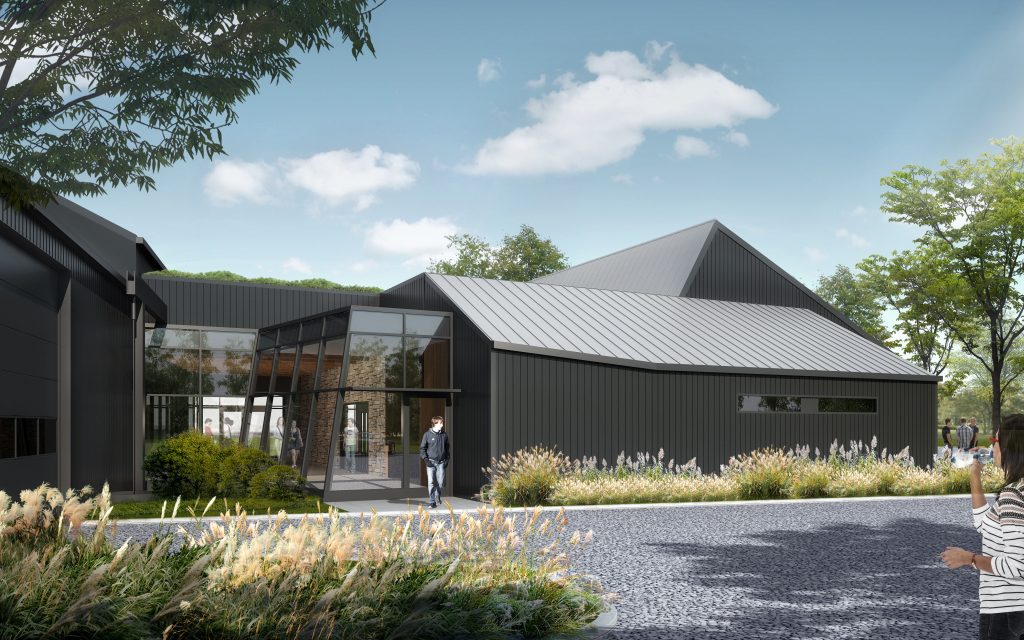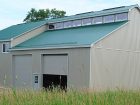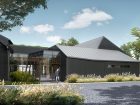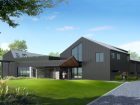
Features
Education
Research
Bedrock Aquifer Field Facility expansion seeks input from all members of ground water industry
A driving force in ground water research dreams big
February 26, 2020 By Ground Water Canada
 The dream: a rendering of what the new facility could look like. PHOTO COURTESY G360
The dream: a rendering of what the new facility could look like. PHOTO COURTESY G360 Beth Parker is the founding director of the G360 Institute for Groundwater Research, holds an NSERC senior industrial research chair and is a professor at the School of Engineering at the University of Guelph.
Parker spoke with Ground Water Canada after funding was approved for a new Bedrock Aquifer Field Facility (BAFF) in Guelph, Ont., to build on the existing facility, established in 2009 as part of the G360 Institute. The new, research-focused, educational facility will highlight ground water and serve as a hub for the public and professionals alike. Parker, who is spearheading these plans, told us of her dreams for the new BAFF.
WHAT ARE YOUR PLANS FOR BAFF?
The proposed new facility will be on the same site as the existing structure at the University of Guelph Arboretum. We’re even trying to keep some of the original building structure with many important design features showcasing ground water and modern technologies. We’ve been given final approval from the university board of governors and our physical resource committee and are now officially in fundraising mode. There are lots of ways in which we’re trying to build excitement around this, but in the same vein that we’ve been enjoying working with ground water equipment vendors and manufacturers, we see this as an opportunity to expose our students to many commercially available products, many of which are developed in Canada. Collaboration with the suppliers, demonstration kits or actual infrastructure at our research facilities will provide hands-on learning opportunities with these technologies. Exposure to well-established tools or new tools in early stages of development enhances both technology transfer and professional practice within the Canadian ground water industry.
WILL THE NEW BAFF BE FOR THE PUBLIC?
I think this is a natural use of an educational and research space – one suiting all ages and stages of education and public engagement. As an undergraduate student, I remember learning about ground water and I found it one of the most head-bending subjects because nothing can be seen directly and therefore understanding relies on visualizing things in your mind. Of course, there are tools and techniques useful for explaining these concepts to the public that will engage various age groups, with hopes of engaging them directly in water stewardship activities. We’ve been thinking about many displays for this facility and, specifically, how to display ground water flow systems, the nature of both aquifers and aquitards, how these systems are understood in a robust manner, how these systems behave under pumping and non-pumping conditions, and how ground water influences other components of the water cycle. As we embark on this fundraising campaign, I would be excited to hear back from our Canadian ground water colleagues on how to best design these displays. What can you think of that would take this idea for a display to another level? How do we make it more intuitive for the non-ground water professional? More visually clear, hands-on and interactive to show relationships or causes and effects?
We are at the perfect stage for collecting ideas. The time is right to rally enthusiasm for using this future facility to the best of our collective abilities and we’re looking for design features that would make this a great place for education, technology demonstrations, conferences, workshops and professional and/or public meetings. We’d like to engage you and the public.
Our hope is to establish a rock wall that represents characteristics of the Silurian dolostone aquifer that supplies fresh water to the Guelph area and beyond, but we want to make the rock properties visual and realistic for people and more accessible than a quarry. That’s just one idea – a transparent well that extends two or three storeys tall so that we can show people what our tools look like inside a borehole and demonstrate how these tools work, would also be valuable. We have existing boreholes in the subsurface near the building that allow us to demonstrate equipment making measurements down a borehole and show the data on monitors as it is being collected for discussion. We might use numerical models to simulate ground water system behaviours and how conditions change due to different influences relevant to the residents of Guelph and Ontario communities. Using physical displays combined with computer models allows people to visualize what they otherwise could not. People talk about dashboards, so that’s essentially monitoring data that’s converted into live-type displays. We’re going to need help, though, because I can’t build any of this stuff myself – I can only dream about it!
SHARE YOUR IDEAS!
We just have to get people to come and explore with us. We’re always open to doing demonstrations. That’s the stage we’re at right now: showing technologies when they are being used and what this data means. We’re looking for sponsors and a sponsorship could be cash, in-kind equipment, support with professional time or ideas. Our focus extends to all possible aspects of ground water, including low temperature geothermal for heating and cooling. We are also engaged with ground water at the interface with surface water and the other components of the water cycle, including the effects of agriculture, urbanization, resource extraction and climate change, all of which are relevant as we work together for a sustainable future.
Interested readers may get in touch with G360 directly or through Ground Water Canada. This interview has been edited and condensed.
Print this page


